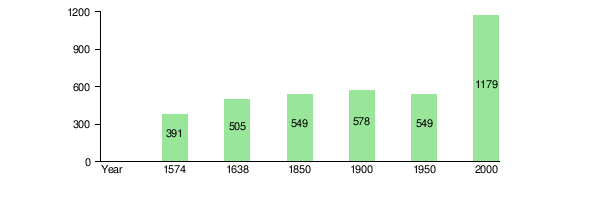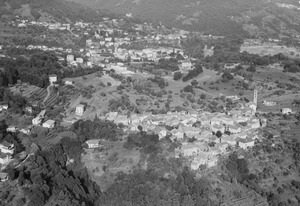Sala Capriasca facts for kids
Sala Capriasca is a village in Switzerland. It is located in the Ticino region, which is in the southern part of the country.
In 2001, Sala Capriasca joined with several nearby villages. These included Cagiallo, Lopagno, Roveredo, Tesserete, and Vaglio. Together, they formed a new, bigger town called Capriasca.
A Look Back in Time
People first wrote about Sala Capriasca way back in 1078. Back then, it was called Sale. Later, in 1467, its name changed slightly to Salla.
Sala Capriasca was once a village surrounded by walls. It was built by the Lombards, an ancient people. In the 1400s, it worked closely with Bigorio as a "Vicinanza." This was a group of families who shared land and resources. In the early 1500s, the village had rights to use shared land in the Capriasca area. Sala Capriasca was part of the Tesserete church area until 1933.
The local church, St. Anthony, was first mentioned in 1413. It was completely rebuilt in the 1400s and 1500s. The Bigorio monastery was built in 1535. It was the first place in Switzerland for the Capuchin friars, a type of monk.
For a long time, the village's economy relied on farming. People also made things by hand. Moving animals to different pastures with the seasons brought in extra money. In the second half of the 1900s, it became a "bedroom community." This means many people lived there but traveled to work somewhere else. By 2000, most workers traveled, especially to the city of Lugano.
The famous Argentine poet, Alfonsina Storni, was born in this village.
Where is Sala Capriasca?
The village of Sala Capriasca is found in the Capriasca valley. It sits at the bottom of Mount Bigorio. The area includes the smaller places of Sala, Bigorio, Lelgio, and Pezzolo.
How Many People Lived Here?
The chart below shows how the number of people living in Sala Capriasca changed over many years. You can see how the population grew or stayed the same at different times.



